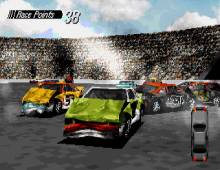
Virtua Cop is a 1994 light gun shooter game developed by Sega AM2 and designed by Yu Suzuki. It was originally an arcade game on the Sega Model 2 system, and was ported to the Sega Saturn in 1995 and Windows in 1996. The Saturn version included support for both the Virtua Gun and Saturn mouse, as well as a new "Training Mode" which consists of a randomly generated shooting gallery.

SEGA Rally Championship is a 1994 racing video game developed by Sega AM3 and published by Sega. Originally released for arcades using the Sega Model 2 board, it was converted to the Sega Saturn in 1995 and Windows in 1997. The unique selling point of Sega Rally Championship was the ability to drive on different surfaces, with different friction properties, with the car's handling changing accordingly. As the first racing game to incorporate this feature, Sega Rally Championship is considered to be one of the milestones in the evolution of the racing game genre. It was also an early rally racing game and featured cooperative gameplay alongside the usual competitive multiplayer.

Discworld is a point-and-click adventure game, developed by Teeny Weeny Games and Perfect 10 Productions, and based upon Terry Pratchett's novels of the same name. Players assume the role of Rincewind the "wizzard", voiced by Eric Idle, as he becomes involved in exploring the Discworld for the means to prevent a dragon terrorising the city of Ankh-Morpork. The game's story borrows elements from several Discworld novels, with its central plot loosely based on the events in Guards! Guards!

Daytona USA is an arcade racing video game developed by Sega AM2 and published by Sega in March 1994. Inspired by the popularity of the NASCAR motor racing series in the US, the game has players race stock cars on one of three courses. It was the first game to be released on the Sega Model 2 arcade system board. Daytona USA is one of the highest-grossing arcade games of all time.

Virtua Racing or V.R. for short, is a Formula One racing video game developed by Sega AM2 and released for arcades in 1992. Virtua Racing was initially a proof-of-concept application for exercising a new 3D graphics platform under development, the "Model 1". The results were so encouraging that Virtua Racing was fully developed into a standalone arcade title.

Wipeout 2097 is a futuristic racing game developed and published by Psygnosis. It is the second installment released in the Wipeout series and the direct sequel of the original game released the previous year. It was originally released in 1996 for the PlayStation, and in 1997 for Microsoft Windows and the Sega Saturn. It was later ported by Digital Images to the Amiga in 1999 and by Coderus to Mac OS in 2002.

Magic Carpet is a 3D flying video game developed by Bullfrog Productions and published by Electronic Arts in 1994. Its graphics and gameplay were considered innovative and technically impressive at the time of its release.

Hi-Octane is a vehicular combat and racing video game published in 1995 for MS-DOS compatible operating systems, PlayStation, and Sega Saturn. It was developed by Bullfrog Productions based upon their earlier Magic Carpet game code.
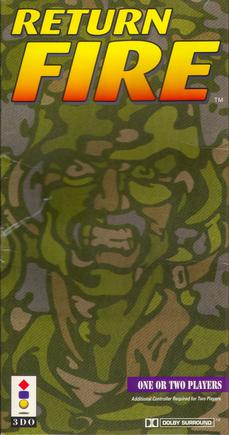
Return Fire is a 1995 video game developed by Silent Software, Inc. for the 3DO Interactive Multiplayer and ported to the PC and PlayStation in 1996. It was preceded by Fire Power (1987) and followed by Return Fire 2 (1998). An expansion pack, Return Fire: Maps O' Death, was released for the 3DO in 1995. Return Fire is a vehicular shooter from a 3D bird's eye view, in which the player's goal is to capture the enemy flag and return with it to their base. It was met with critical acclaim for its unusual gameplay concept, enjoyable multiplayer mode, and classical soundtrack, and is remembered as one of the 3DO's "best games" in its Home of the Underdogs entry.
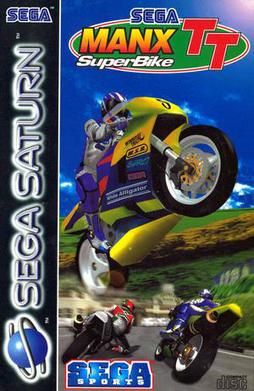
Manx TT Super Bike is a 1995 arcade racing game developed jointly by Sega AM3 and Sega-AM4. It is a motorcycle racing game built for the Sega Model 2 arcade board. Up to 8 players can race in this game if enough arcade cabinets are linked together, following on from Daytona USA. It was later ported to the Sega Saturn by Tantalus Interactive and to Windows by Perfect Entertainment.

Destruction Derby 2 is a vehicular combat racing video game developed by Reflections Interactive and published in 1996 by Psygnosis for Microsoft Windows and PlayStation. The sequel to Destruction Derby, players race with the goal of earning points by damaging opponent cars. Standard races and matches based in arenas with the goal of remaining the last player driving are also available. The game is an overhaul of the original and features ideas that did not make it into the first game including tracks that feature obstacles and improved realism. The car mechanics were also redesigned. Development was also focused on Americanisation: the game style shifted away from the British banger racing of the original, and the cars and music were changed to fit a NASCAR theme. The game features Paul Page as commentator, and the soundtrack was created by thrash metal bands Jug and Tuscan. The game was positively received, with reviewers praising the large tracks and car physics, though the PC version was criticised for its difficulty.

Wipeout is a futuristic racing video game developed and published by Psygnosis. It is the first game in the Wipeout series. It was originally released in 1995 for PlayStation and DOS, and in 1996 for Sega Saturn, being a launch title for the PlayStation in Europe. It was re-released as a downloadable game for the PlayStation 3 and PlayStation Portable via the PlayStation Network in 2007.

The Need for Speed is a street racing game developed by EA Canada, originally known as Pioneer Productions, and published by Electronic Arts for 3DO in 1994. It allows driving eight licensed sports cars in three point-to-point tracks either with or without a computer opponent. Checkpoints, traffic vehicles, and police pursuits appear in the races.
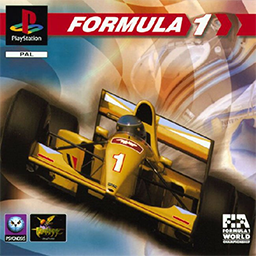
Formula 1 is a racing video game developed by Bizarre Creations and published by Psygnosis for PlayStation and Microsoft Windows. It is the first installment in Sony's Formula One series.

Assault Rigs is a vehicular combat game developed and published by Psygnosis and released in 1996 for MS-DOS compatible operating systems and PlayStation. It was released a year later for the Sega Saturn in Japan. The game takes place in the future, where real sport has been overtaken in favour of virtual sport, the most popular of which is Assault Rigs, a tank simulator set inside a 3D virtual environment.
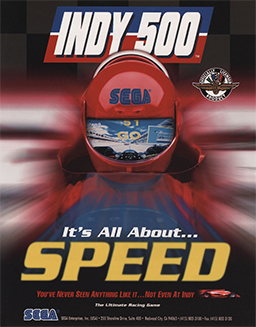
Indy 500 is a 1995 arcade racing game developed by Sega AM1. Based on the IndyCar Series, the game possesses a license from the Indianapolis Motor Speedway, home of the Indianapolis 500, and includes the speedway as one of its courses. Indy 500 was AM1's second game developed using 3D computer graphics and their first to utilize color textures. While planned as a Model 3 arcade system board release, delays in the hardware's completion led to use of the Model 2 instead. A Sega Saturn port was planned, but later canceled. Reception to Indy 500 was mixed, with some critical comparison to other games such as Sega AM2's Daytona USA and Namco's Ace Driver and Rave Racer.

Destruction Derby 64 is a vehicular combat racing video game developed by Looking Glass Studios and published by THQ, under license from Psygnosis. It is the third installment in the Destruction Derby series, released on 1 October 1999 in North America and 12 October 1999 in Europe for the Nintendo 64.
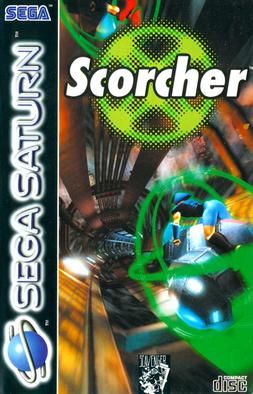
Scorcher is a futuristic racing video game by Danish developer Zyrinx, released in 1996 for the PC and in 1997 for the Sega Saturn. Originally announced under the name "Vertigo", the game focuses on special motorcycles that reach up to 450 km/h racing through dangerous tracks in a dystopian year 2021.
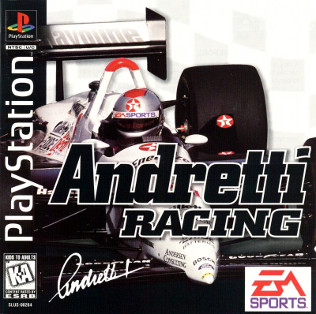
Andretti Racing is a video game developed by American studios High Score Productions and Stormfront Studios and published by Electronic Arts for the PlayStation and Sega Saturn in 1996, and for Windows in 1997. The game's title refers to legendary racing drivers Mario Andretti and Michael Andretti.

Road Rash is a 1994 racing and vehicular combat video game originally published by Electronic Arts (EA) for the 3DO Interactive Multiplayer. A version for the Sega CD was developed simultaneously and released in 1995 to act as a "bridge" between the 3DO version and the Sega Genesis title Road Rash 3, and the game was subsequently ported to the PlayStation, Sega Saturn, and Microsoft Windows in 1996. The game is the third installment in the Road Rash series, and is centered around a series of motorcycle races throughout California that the player must win to advance to higher-difficulty races, while engaging in unarmed and armed combat to hinder the other racers.

